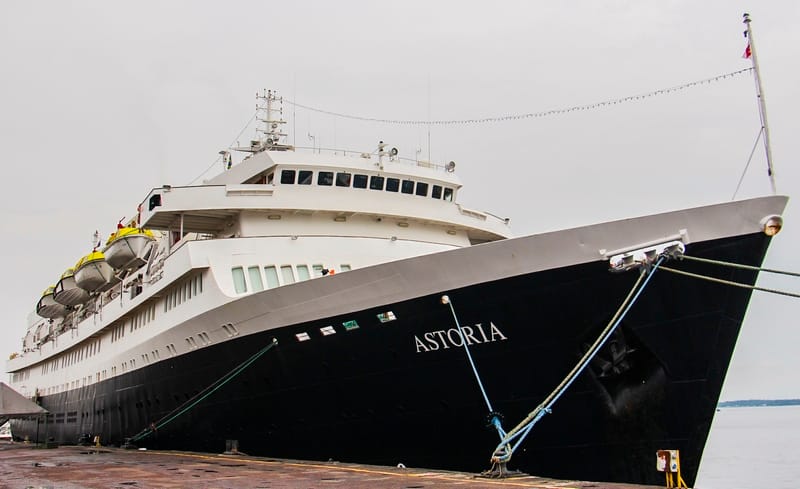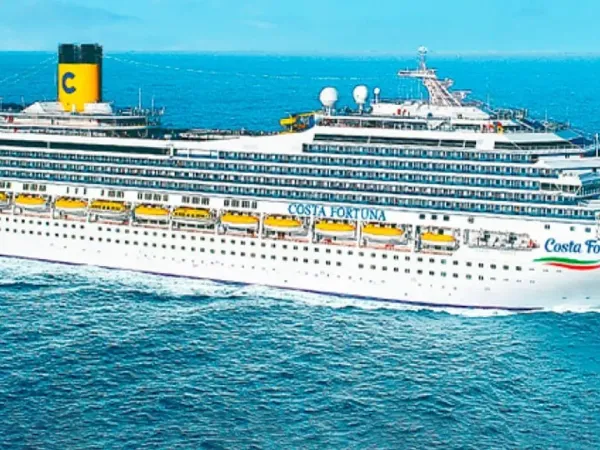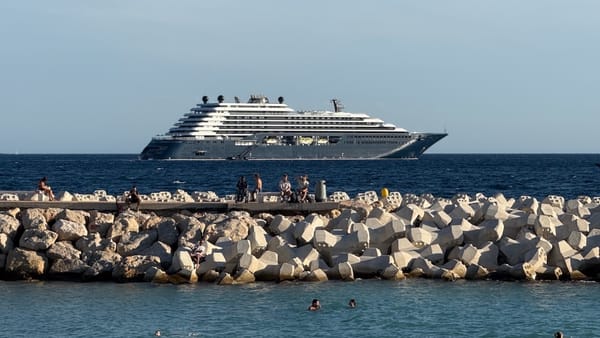Astoria, World’s Oldest Cruise Ship, Begins Year-Long Dismantling in Ghent
With Astoria now at Galloo Gent for dismantling, the ship’s fate highlights both the challenge of preserving classic liners and Europe’s emphasis on sustainable ship recycling practices.

The Astoria, regarded as the world’s oldest cruise ship, has formally reached the end of its 77-year service. Acquired on June 17, 2025, at a Rotterdam District Court auction for €200,000 by Belgian recycler Galloo, the historic vessel departed Rotterdam’s Waalhaven under tow on July 3 and arrived in Ghent the following day. The dismantling process by Galloo Gent is expected to span more than a year, with over 90 percent of the ship’s materials slated for recycling.
Final Auction and Tow to Ghent
Once known as the Swedish America Line’s Stockholm upon its 1948 launch, Astoria was laid up in Rotterdam following the pandemic-induced collapse of Cruise & Maritime Voyages (CMV) in 2020. Persistent dockage fees and maintenance costs led local authorities to auction the ship on June 17, 2025. Galloo’s €200,000 bid was the only offer received, reflecting the significant investment required to restore such an aged vessel to operating standards.
The long layup began in December 2020, when severe weather in the North Sea diverted a planned tow to Lisbon into Rotterdam. Earlier preservation proposals, including one backed by U.S. investors and a 2021 attempt to raise more than €10 million at auction, did not come to fruition. Ultimately, the court-approved sale allowed Galloo to tow Astoria from Waalhaven on July 3. Port sources confirmed the ship arrived in Ghent on July 4, where its dismantling is proceeding under strict environmental controls.
A Storied Maritime History
Originally built to transport 390 passengers (later configured for up to 520 guests), Stockholm was intended for transatlantic crossings under Swedish America Line. In 1956, its ice-strengthened bow became an unwelcome focus of maritime lore when the vessel collided with the Italian liner Andrea Doria off Nantucket, causing Andrea Doria to sink. Despite a badly crushed bow, Stockholm rescued 572 survivors and limped to New York, making global headlines.
Renovated multiple times over the decades, the ship took on various identities, including the East German holiday vessel Völkerfreundschaft, the Italian luxury liner Italia Prima, and the cruise ship Athena. It traversed political flashpoints such as the Cuban Missile Crisis, faced pirate threats, and served as a barracks vessel for asylum seekers. In the 2010s, it was purchased by Portuscale Cruises and eventually chartered to CMV from 2015 to 2020. After CMV’s collapse, France-based Rivages du Monde operated some seasonal charter programs, but the vessel remained largely inactive until its final disposal.
Preservation Efforts and Industry Reflections
Maritime enthusiasts long hoped to preserve Astoria as a floating museum or hotel ship, citing its distinct lineage and resilience. However, the cost of maintaining and upgrading the nearly eight-decade-old liner was prohibitively high. Several attempts to secure private or institutional funding failed to advance, highlighting the financial and regulatory challenges inherent in restoring such a historically significant yet aging vessel.
Astoria’s downfall underscores broader realities for classic liners: compliance demands, modernization requirements, and refit expenses commonly outweigh preservation ambitions. Although the ship’s scrapping ends its life at sea, the recycling process reflects a growing industry focus on responsible disposal, with Galloo planning to recover and repurpose steel, fixtures, and machinery at a specialized yard.
Recycling at Galloo Gent
The dismantling operation in Ghent involves removing usable equipment before cutting and sorting the hull’s steel and non-ferrous metals. According to Galloo, high recovery rates will be prioritized, and strict handling measures will govern legacy paints, insulation, and other materials. Over 90 percent of the ship is expected to be recycled, bolstering sustainability goals within Europe’s ship-recycling sector.
For many observers, the end of Astoria marks a milestone in maritime heritage, as fewer classic ocean liners remain. Yet, the vessel’s long career, from its collision with Andrea Doria to modern cruising, serves as a testament to the adaptability, technological evolution, and cultural significance of ocean-going passenger ships.
Frequently Asked Questions (FAQs)
Why was Astoria sold for recycling rather than preserved?
After a lengthy layup in Rotterdam, the ship needed substantial investments to satisfy modern safety and hotel standards. A preservation plan backed by U.S. investors did not materialize, and attempts to secure higher bids at auction failed to meet financial thresholds. Ultimately, recycling became the only viable option.
Who bought Astoria and for how much?
Belgian recycler Galloo acquired Astoria at a Rotterdam District Court auction on June 17, 2025, for €200,000. This was the sole bid and reflected the steep costs of rehabilitating such an elderly vessel.
Where will the dismantling take place, and how long will it take?
The ship is being dismantled at Galloo Gent in Ghent, Belgium. The process is expected to span more than a year, involving machinery removals, material sorting, and specialized handling of older ship components.
How much of the ship will be recycled?
Local reports indicate over 90 percent of Astoria’s materials are slated for recycling, including steel, non-ferrous metals, and various interior fittings. Galloo’s specialized approaches aim to maximize sustainability and material recovery.
Who last operated the ship as a cruise vessel?
Astoria was last chartered by Cruise & Maritime Voyages from 2015 to 2020, with additional summer services occasionally run by France-based Rivages du Monde. CMV ceased operations in 2020 during the pandemic, leading to Astoria’s prolonged layup.




